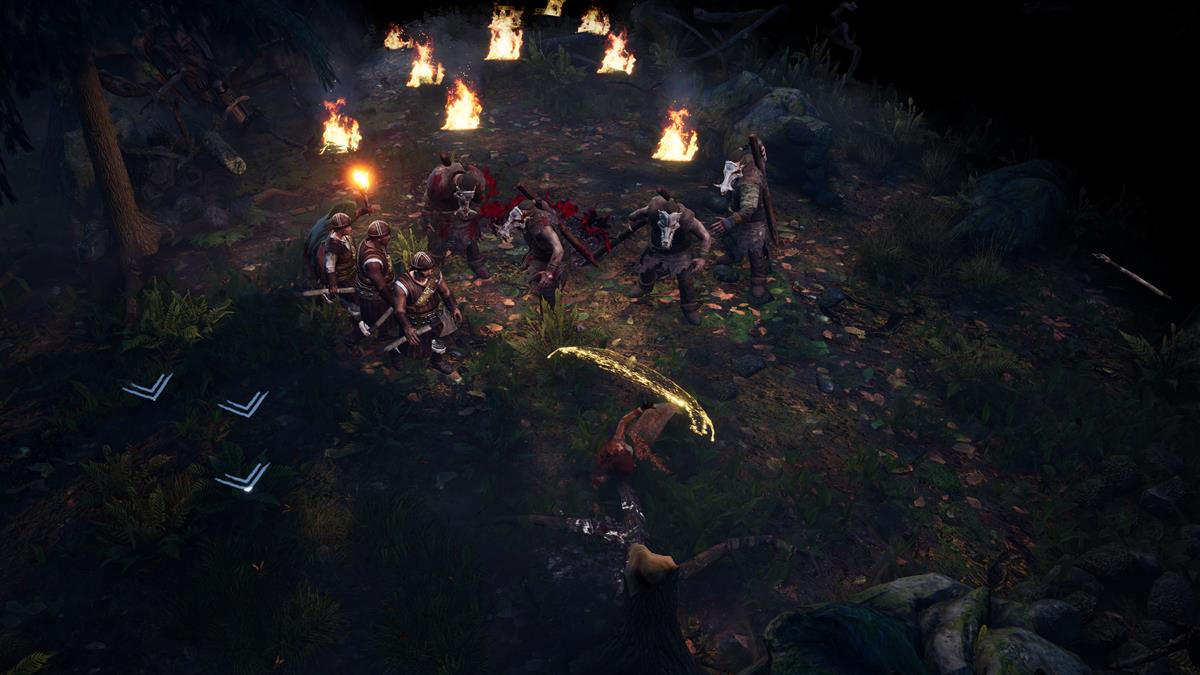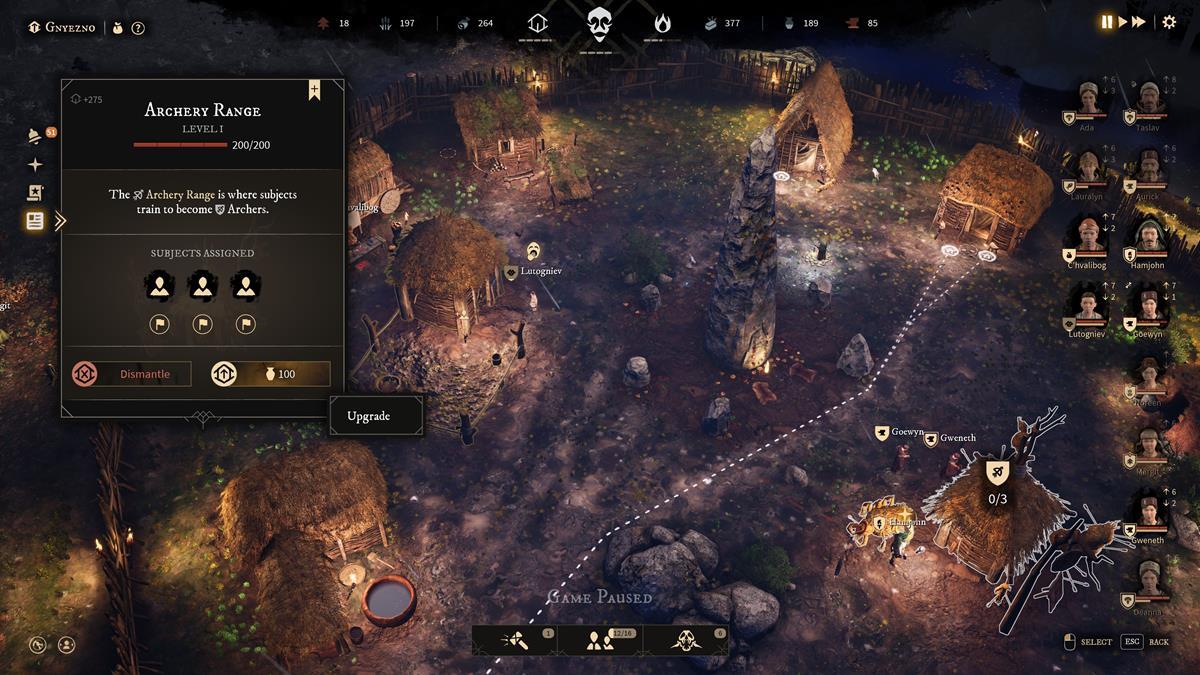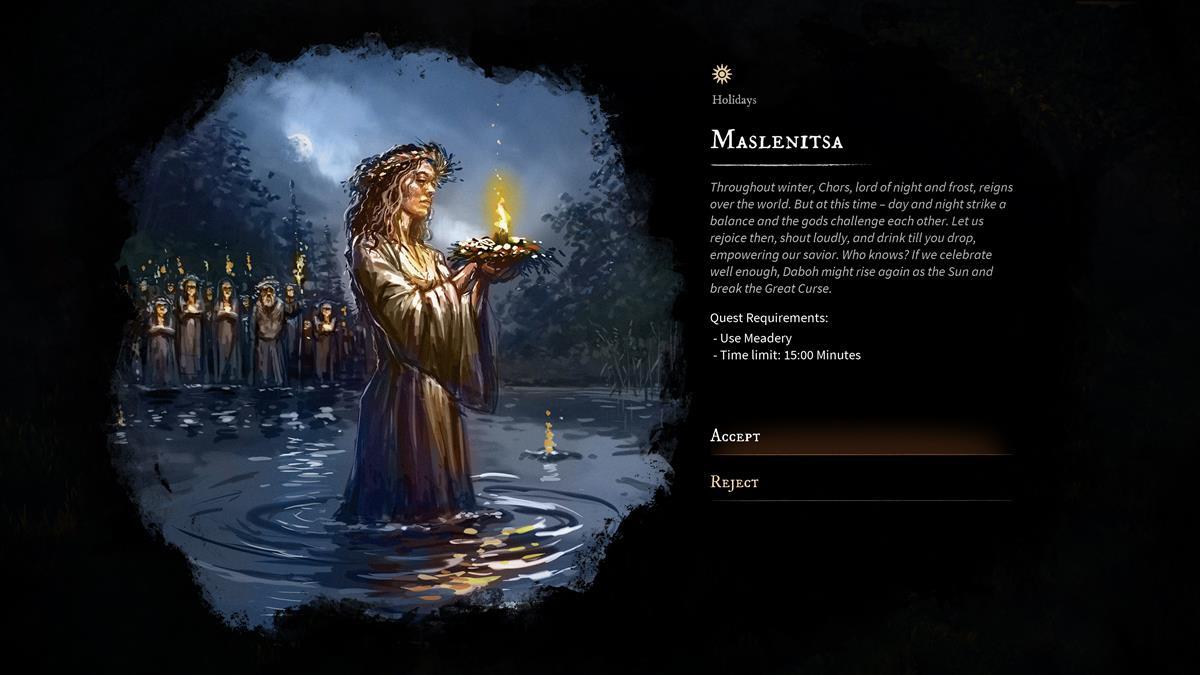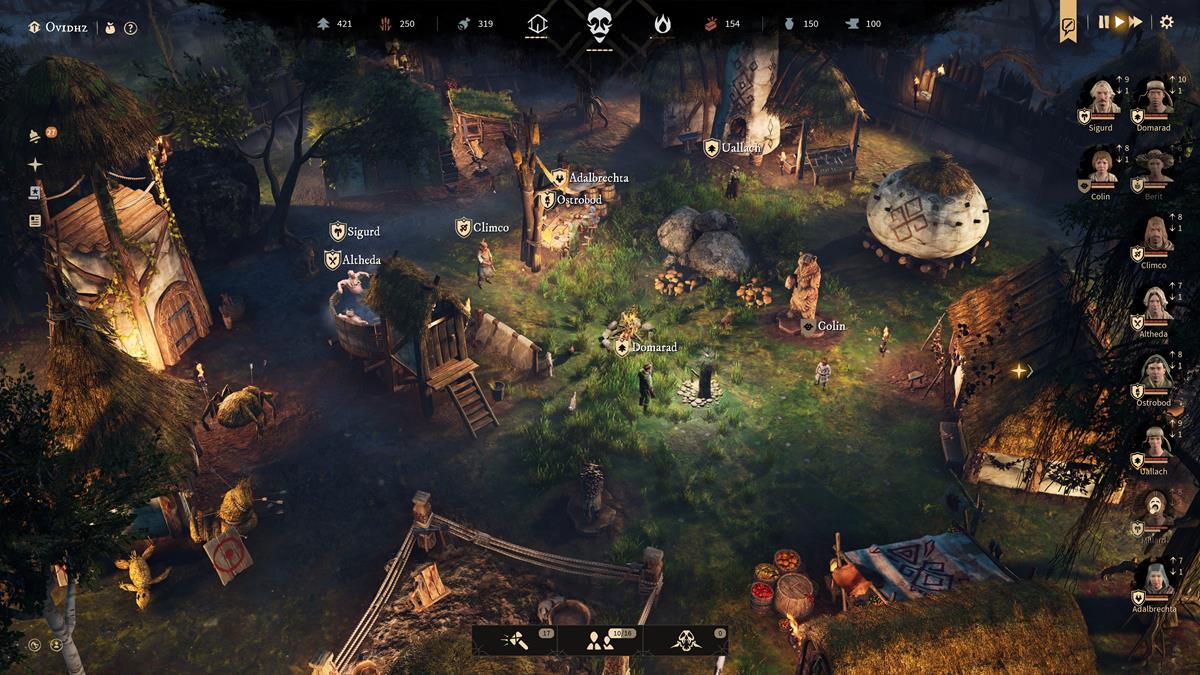I really wanted to like Gord. The survival sim and colony management game from Covenant.dev and Team17 promised a dark fantasy world inspired by Slavic folklore. Indeed, part of the charm was its presentation, with a grim atmosphere that few titles could match.
Unfortunately, my experience with Gord was also marred by hiccups and technical issues. Moreover, there are mechanical flaws that become more noticeable the more you progress through the campaign. It came to a point where I left the campaign completely, trying the custom scenarios instead, which I found more enjoyable.
Gord Review: Villagers and Villains

Gord‘s story mode begins in a time of war. Kingdoms are raising their armies, and villages are ripe for plunder. Your character is given the role of an overseer, one who will lead a band of peasants as they struggle to survive in a harsh wilderness.
Soon, you’re introduced to a few supporting characters. There’s Boghdan, the wise elder of the tribe, as well as Edwyn, the king’s conniving emissary. You also meet Lynx, a powerful witch who can call upon the wrath of the gods. Arrayed against you are the Wildfolk, barbarian tribes who don’t want you encroaching upon their lands, as well as the untold Horrors lurking in the forests.
Gord sets the stage for what could’ve been a memorable journey. The tale is inspired by Slavic culture, and though I must admit I know very little of it, I still appreciated the overall design. Settlements and buildings are ramshackle structures, evoking a theme of living and thriving in the outdoors. The woods are dangerous, filled with wolves, snakes, and other unspeakable creatures. The monsters that you meet (more on these later) can also curse your people, or you can offer a sacrifice.
Indeed, I marveled at Gord‘s atmosphere more than other facets. I truly felt the grim and bleak reality, which inspired me to take care of my villagers more often. It also helped that Gord has decent performance — I have an Nvidia RTX 3080, Intel 10900K, and 32GB of RAM and was able to run the game at 4K resolution on the highest settings with decent framerates. Sadly, the game did crash a few times, though I can only surmise that it may have been from certain actions or decisions not necessarily related to my hardware. Still, it feels a bit unoptimized at this point.

The first major hurdle in Gord is more mechanical in nature. As a survival sim and colony management hybrid, you must assign villagers to work. They can change professions to gather food, lumber, and reeds, or they can become soldiers and scouts. While you’re doing this, you also construct additional buildings to help your settlement grow, as well as shrines and temples to bolster faith.
However, despite being a game with survival mechanics, my units had almost zero survival instincts. There were many times when I had to pan the camera all over the map just to spot someone who happily ran into wolves and barbarians — paying them no mind — likely following their task to collect mushrooms. I had to click several times to make wounded units return to my settlement, which also went awry because they still wanted to rejoin the fight. There were also instances when merely double-clicking wasn’t enough to focus on a unit (think quadruple-clicking). Pathing also became an issue since units preferred to fight, rather than flee, even if things weren’t going their way.
This micromanagement issue also reared its ugly head when taking note of professions. In Gord, your villagers can only collect certain types of resources if they belong to a particular profession. As such, whenever the Wildfolk raided my lands, units dropped whatever they were carrying so they could engage in battle. A simple button click made them go back to work, but there were also moments when they wouldn’t pick up the materials that they dropped.
Funny enough, villagers that were just idle also wouldn’t pick up those items since they had a different profession. It’s an odd choice that only fishermen, foragers, or claymakers can’t pick up anything not related to their jobs.
Regrettably, there were also no options to somehow set an AI behavior differently, where villagers act more defensively when exploring, or for them to resume tasks/go for a rest at certain HP/sanity thresholds. With too many things going on, I was hoping for quality of life (QoL) improvements to lessen the need for manual input.

As an aside, I should briefly mention Gord‘s sanity system. It entails keeping characters in well-lit areas, having them drink mead, or tasking them to pick up yellow herbs so that they can maintain their composure. If it gets too low, they’ll suffer from mental afflictions.
One particular incident involved a horror known as Ardaven, who wanted a child to be sacrificed. Failure to comply meant having to fight it. I thought long and hard, and I decided to offer one of the children in the village. After a gruesome cutscene, I was surprised that the child’s mother had no reaction at all — not even a drop to her sanity meter. I was flabbergasted. Given that there’s a system in place, the extremely cruel decision had no effect whatsoever on a character.
Gord‘s campaign is also fairly flawed when it comes to progression. At the end of each mission, you move to a new area. Your previous village will be gone for good, and the new area might have fewer buildings than before (in some cases, the town is in ruins, so you have to start from scratch). You can also decide to bring along only six or seven citizens with you, as though the others were just left by the wayside.
I started wondering the point of it all: my characters were procreating, and those children eventually grew up to be productive adults. Then, come the next mission, the number of citizens I could bring with me was far lower than what I had in the previous arc. If the idea is to lead your tribe to prosperity, then a start-and-stop-and-start-anew concept becomes counterintuitive. It’s hard to become attached to your characters if some of them will disappear the moment a mission is completed.
In the end, I opted for Gord‘s custom scenarios. These allow you to tweak various settings, from the number of resources and enemies to the buildings in your settlement and the type of victory condition. It also lets you pick a type of horror that will show up on the map, so you can decide to satisfy their whims or bring them down with your warriors.
While custom scenarios lack the storyline beats, the mode presents a more viable option for those who like straightforward colony management games. You can truly watch your village grow, and you can see how your characters survive and thrive in an inhospitable wilderness.
Gord Review — The Bottom Line

Pros
- A dark and grim atmosphere that captures what it’s like to live in the wilds.
- Nasty creatures that lurk in the forests, including horrors that have their own demands.
- A welcome challenge for those who like colony management sims with a survival theme.
Cons
- Characters have no regard for their own survival, often running into enemies just to gather resources. Units will also run to faraway nodes even though there are others nearby.
- No settings that can tweak AI behavior, such as being more defensive against threats or work/rest dependencies related to health and sanity levels.
- Event decisions are still fairly reliant on randomness (RNG) and can have nonsensical results.
- Hard to get attached to characters since you can only bring a few with you in succeeding missions.
Gord shows a lot of promise and is certainly enticing for those who like the genre. Unfortunately, it also needs a few improvements and tweaks, namely with unit behavior and pathing, to lessen any frustrations that you might experience.
[Note: Team17 provided the copy of Gord used for this review.]







Published: Aug 15, 2023 09:00 am